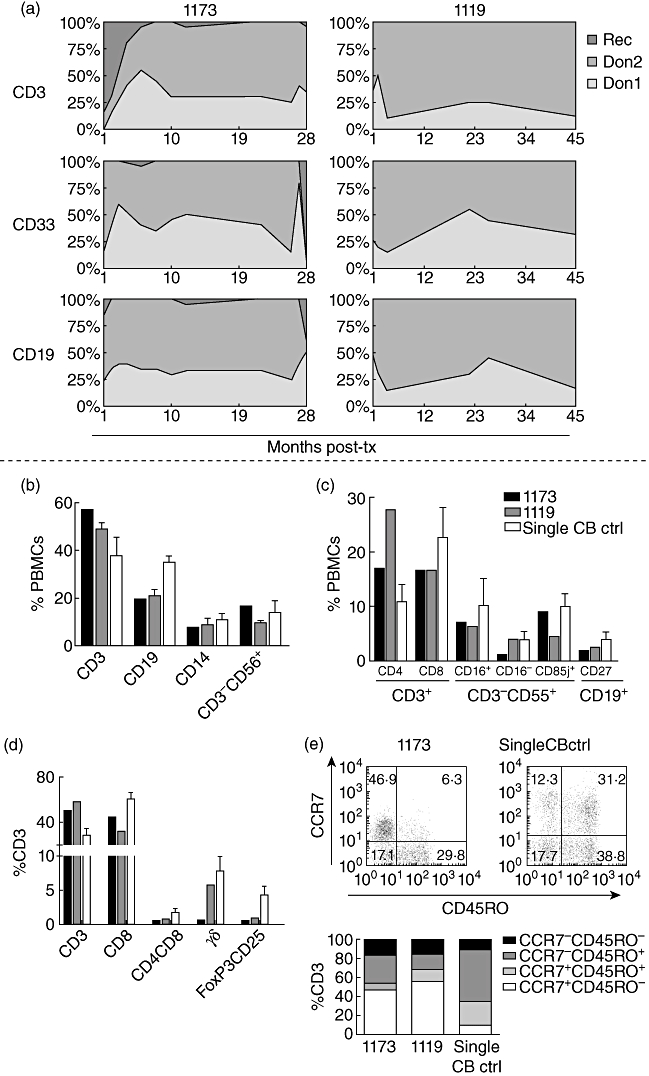Fig. 1.

Cord blood-transplanted patients with a stable donor–donor chimerism have reduced frequencies of regulatory-, γδ- and CD4+CD8+ memory T cells, as well as a more naive T cell phenotype compared to patients with only one donor prevailing. (a) Chimerism analysis of CD33+, CD19+ and CD3+ cells from patients 1119 and 1173, showing a stable double donor–donor chimerism over time (28 and 45 months, respectively). The following analyses were performed with blood samples from months 25 to 26 (1173), and 42, 43 and 55 (1119) post-transplantation, respectively. (b,c) Flow cytometry analysis of different cell populations indicated on the x-axis, comparing patients 1119 and 1173 and single cord blood controls. Data are presented as % of peripheral blood mononuclear cells (PBMCs) for 1173, and mean % of PBMCs for 1119 (n ≥ 2) and the single cord blood controls (n = 4). (d) % of CD3+ T cell subpopulations indicated on the x-axis. Data are presented as % of CD3+ cells for 1173, and mean % of CD3+ cells for 1119 (n ≥ 2) and the single cord blood controls (n = 4). (e) T cell maturation profile (from least to most mature: CCR7+CD45RO-; CCR7+CD45RO+; CCR7-CD45RO+; CCR7-CD45RO-) for 1119 and 1173 compared to single cord blood controls, as indicated on the x-axis. Data are presented as % of CD3 cells for 1173, and mean % of CD3+ cells for 1119 (n = 3) and the single cord blood controls (n = 4).
